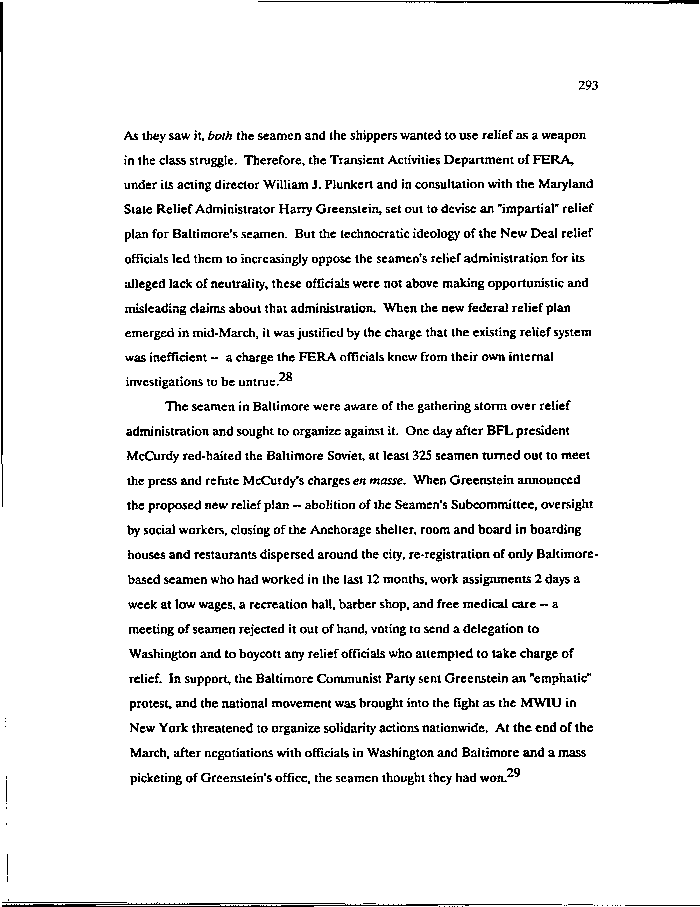|
293
As they saw it, both the seamen and the shippers wanted to use relief as a weapon
in the class struggle. Therefore, the Transient Activities Department of FERA,
under its acting director William J. Plunkert and in consultation with the Maryland
State Relief Administrator Harry Greenstein, set out to devise an "impartial" relief
plan for Baltimore's seamen. But the technocratic ideology of the New Deal relief
officials led them to increasingly oppose the seamen's relief administration for its
alleged lack of neutrality, these officials were not above making opportunistic and
misleading claims about that administration. When the new federal relief plan
emerged in mid-March, it was justified by the charge that the existing relief system
was inefficient - a charge the FERA officials knew from their own internal
?R
investigations to be untrue. °
The seamen in Baltimore were aware of the gathering storm over relief
administration and sought to organize against it. One day after BFL president
McCurdy red-baited the Baltimore Soviet, at least 325 seamen turned out to meet
the press and refute McCurdy's charges en masse. When Greenstein announced
the proposed new relief plan - abolition of the Seamen's Subcommittee, oversight
by social workers, closing of the Anchorage shelter, room and board in boarding
houses and restaurants dispersed around the city, re-registration of only Baltimore-
based seamen who had worked in the last 12 months, work assignments 2 days a
week at low wages, a recreation hall, barber shop, and free medical care - a
meeting of seamen rejected it out of hand, voting to send a delegation to
Washington and to boycott any relief officials who attempted to take charge of
relief. In support, the Baltimore Communist Party sent Greenstein an "emphatic"
protest, and the national movement was brought into the fight as the MWIU in
New York threatened to organize solidarity actions nationwide. At the end of the
March, after negotiations with officials in Washington and Baltimore and a mass
?o
picketing of Greenstein's office, the seamen thought they had won.
|

